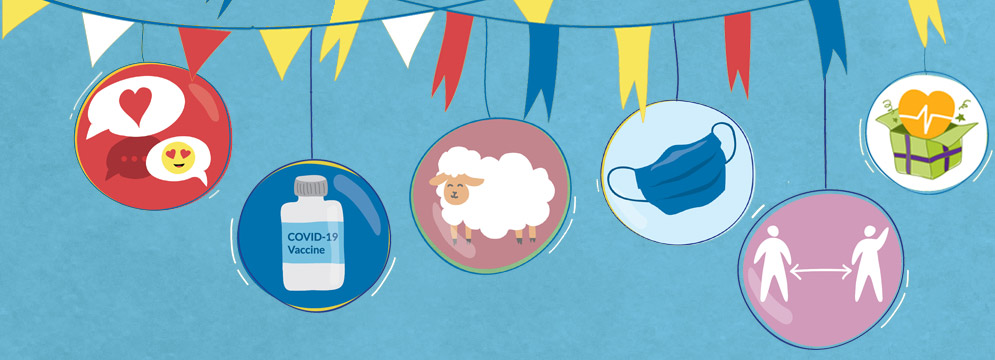
How can I keep safe during Eid al-Adha?
Practice physical distancing - Always maintain distancing (minimum 1 metre) between people.
Use culturally and religiously sanctioned greetings that avoid physical contact, such as waving, nodding, or placing the hand over the heart.
Follow the advice on the appropriate use of masks issued by relevant health authorities.
Cover mouth and nose with the bent elbow or a tissue when coughing or sneezing; avoid touching eyes, nose and mouth.
Regularly and thoroughly wash hands with soap and water, or clean them with an alcohol-based hand rub.
Avoid large gatherings and crowded places.
Meet with people virtually, using digital communication tools and platforms.
Don’t go out if you feel unwell or have COVID-19 like symptoms.
Get vaccinated, if you are eligible and continue observing precautionary measures, even if you are vaccinated.
Refrain from attending gatherings, such Eid prayers and celebrations, if you belong to one of the high-risk groups or you feel unwell.
What should I do to maximize COVID-19 precautions during Eid al-Adha activities?
Hold events in outdoor rather than indoor venues; if indoors, ensure adequate ventilation by natural or mechanical means, e.g. by keeping windows open or regularly opening them, or by improving air supply and removal by powered air movement components.
Shorten the duration and size of events; prevent large numbers of people gathering in order to limit potential exposure.
Enforce adherence to physical distancing among attendees throughout the entire event duration.
Regulate the flow of people at entrances and exits to avoid crowding; employ staggering, crowd barriers, separating entry and exit points, and adopting pathways for unidirectional movement.
How can I ensure healthy hygiene clean spaces for worship/ gatherings?
Enforce thorough routine cleaning of venues where people gather and all commonly used facilities, before and after each event, using detergents and disinfectants.
Clean often-touched objects and surfaces.
In mosques, keep the premises and wudu facilities clean, and maintain general hygiene and sanitation.
Encourage the use of personal prayer rugs.
Availability of soap, water, and alcohol-based hand-rub.
Disposable tissues and bins, and guarantee the safe disposal of waste.
Visual displays of advice on physical distancing, hand hygiene, respiratory etiquette, and general messages on covid-19 prevention .
Encourage performing wudu at home, where feasible.
Is it true that COVID-19 spreads from humans to animals? What should I do when performing the ritual animal slaughter for Eid al-Adha?
Yes. COVID-19 could transmit from humans to animals. You should:
Abide by safety standards when procuring animals: avoid overcrowding; maintain hand and equipment hygiene.
Procure animals through a trusted official procedure and perform adequate veterinary checks for livestock to mitigate other zoonosis and infection.
Do not slaughter animals that appear sick, and plan for dedicated space for quarantine and isolation of suspected ill animals.
Do not slaughter at home.
What are the proper measures when planning for slaughter and distribution of meat, consider the following safety measures?
Discourage home slaughtering; nominate one household member to perform the sacrifice.
Consider using centralized institutions to avoid overcrowding.
Adhere to physical distancing and proper hand hygiene throughout the cycle (collecting, packaging, storing and distribution), for both workers and the public.
How can I judge that a facility is deemed safe for slaughter of animals during Eid Al-Adha?
A facility is deemed safe for slaughter of animals during Eid Al-Adha by:
Ensuring sanitation, ex. hand washing facilities, cleanable walls and floors & periodic inspection of facilities should take place to uphold standards.
Ensure staff are practicing infection prevention and control measures for COVID-19 (e.g. physical distancing, hand hygiene, respiratory etiquette), and are using adequate personal protective equipment while processing animals (e.g. gloves, apron, shoes/boots).
Ensure staff are familiar with standard operating procedures related to safety practices, and are aware of COVID-19 signs and symptoms.
Ensure that waste management for unused animal by-products is in place and that facilities have a contingency plan in the event of contamination or an outbreak.


